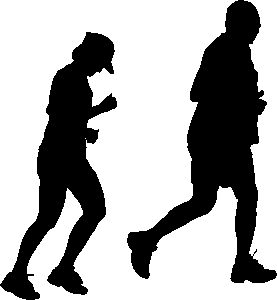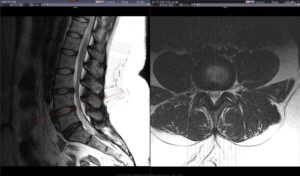 The benefits of exercise both cardiovascular and resistance training for your muscles are so numerous, it is very important for weight management, to maintain a healthy heart, decrease cholesterol, decrease blood pressure, decrease blood sugar, reduce stress, improve overall well being. The key to a healthy body and mind is a regular exercise program, the physical therapists at Goodell are willing to work with your schedule to develop the best possible plan and program for you to fit into your busy day in order to get the best benefits in the least amount of time. Even if you don’t need therapy we are happy to offer personal training to help you set up a resistance training program that will be safe for your joints and reduce injury while giving you the maximum gains.
The benefits of exercise both cardiovascular and resistance training for your muscles are so numerous, it is very important for weight management, to maintain a healthy heart, decrease cholesterol, decrease blood pressure, decrease blood sugar, reduce stress, improve overall well being. The key to a healthy body and mind is a regular exercise program, the physical therapists at Goodell are willing to work with your schedule to develop the best possible plan and program for you to fit into your busy day in order to get the best benefits in the least amount of time. Even if you don’t need therapy we are happy to offer personal training to help you set up a resistance training program that will be safe for your joints and reduce injury while giving you the maximum gains.
Archives: Conditions
Holds our conditions and condition-specific data
Elbow Injuries
 Most commonly seen elbow injuries are medial and lateral epicondylitis, which is when the tendon that attaches your forearm muscles to the bone at your elbow are irritated and inflamed. It is also called tennis or golfers elbow because repetitive movements that take place with these sports, assembly work, or grocery checking usually cause it. It can be very painful and it is important to see your physical therapist to get proper safety tips for your wrist and elbow joints and to reduce inflammation and build strength. Fractures of the arm can also cause problems at the elbow and it is very important to maintain mobility at this joint for full function.
Most commonly seen elbow injuries are medial and lateral epicondylitis, which is when the tendon that attaches your forearm muscles to the bone at your elbow are irritated and inflamed. It is also called tennis or golfers elbow because repetitive movements that take place with these sports, assembly work, or grocery checking usually cause it. It can be very painful and it is important to see your physical therapist to get proper safety tips for your wrist and elbow joints and to reduce inflammation and build strength. Fractures of the arm can also cause problems at the elbow and it is very important to maintain mobility at this joint for full function.
Dupuytren’s Contracture
Is the formation of scar tissue under the skin at the palm of the hand that causes thickening and shortening of the fascia around the finger tendons leading to the fingers being pulled into flexion. It can be difficult to open your hand fully and can begin as a lump at the base of the fingers. The treatment depends on the severity and the underlying condition of the individual but can include stretching, heat, splinting and ultrasound.
Disc Bulge
 The disc is the cushion found between our spinal segments and if it undergoes trauma or repetitive overuse it can push out into the space that the nerve is causing pain into the arms if at the neck level and into the legs if in the low back area. The disc material can protrude causing nerve impingement or compression leading to decreased mobility, weakness, pain, numbness or tingling, and difficulty walking. PT can help to improve your joint stability, mobility, teach you proper body mechanics to reduce your symptoms, provide traction to decompress, improve your strength and allow for your body to reabsorb the misplaced disc material. At times surgery is required for disc issues and PT can help both pre and post surgery to improve your function.
The disc is the cushion found between our spinal segments and if it undergoes trauma or repetitive overuse it can push out into the space that the nerve is causing pain into the arms if at the neck level and into the legs if in the low back area. The disc material can protrude causing nerve impingement or compression leading to decreased mobility, weakness, pain, numbness or tingling, and difficulty walking. PT can help to improve your joint stability, mobility, teach you proper body mechanics to reduce your symptoms, provide traction to decompress, improve your strength and allow for your body to reabsorb the misplaced disc material. At times surgery is required for disc issues and PT can help both pre and post surgery to improve your function.
Diabetes
 Exercise has proven to be a crucial part of managing your diabetes. Type II diabetes is very common and can be reduced with healthy dietary choices, weight management and exercise. It is very important to have an individual exercise program designed for you by a PT in order to get the maximum benefits of lowered blood sugar and decreasing your bodies resistance to insulin while taking into consideration your endurance and joint safety.
Exercise has proven to be a crucial part of managing your diabetes. Type II diabetes is very common and can be reduced with healthy dietary choices, weight management and exercise. It is very important to have an individual exercise program designed for you by a PT in order to get the maximum benefits of lowered blood sugar and decreasing your bodies resistance to insulin while taking into consideration your endurance and joint safety.
Degenerative Disc Disease
As we age our disc tissue between our spine segments loses some of its strength and cushion ability. With some patients this fragile disc can cause loss of room for the nerve to move or pinching, disc buldging, or herniation. PT helps to improve your body mechanics, educate you on safe exercise practices, reduce risk of further injury, improve flexibility, and teach you how to reduce or resolve your symptoms independently with use of traction or relief postions.
Connective Tissue Disease
This disorder involves multiple body systems and symptoms can be in the heart, muscles, or nerves and there is a connection to sleep loss, headaches, depression, anxiety, and others. There are biomechanical and nutritional reasons why these symptoms often appear together and many dietary and body alignment changes people can make to try to correct them. PT can help with posture, joint stability, safe exercise programs and help with the body mechanics portion of this disorder.
Complex Regional Pain Syndrome
Is a rare condition found in more women then men and is usually onset at 40 –60 years of age. Symptoms include burning, swelling, skin discoloration, aching pain, abnormal sweating, altered temperature or hypersensitivity of the arm or leg. Gentle guided exercising of the arm or leg may improve range of motion and strength and relaxation techniques can help to reduce pain. The earlier the disease is diagnosed, the more effective exercises may be.
Frozen Shoulder
Frozen shoulder is also known as adhesive capsulitis. It is a very painful condition that has no known cause. A person with this condition is unable to move the shoulder. Simple daily activities may become extremely limited and very painful. There are three stages of frozen shoulder which include the painful stage, the adhesive stage and the recovery stage. People with adhesive capsulitis may benefit from physical therapy to help instruct in range of motion, strength and functional exercises to help the individual regain function, mobility and strength.
Ankylosing Spondylitis
 AS is a type of arthritis that usually affects the spine but can also affect other joints. It is inflammation of the joints that can cause more bone to be formed and a possible fusion of joints to occur. It causes joint pain and stiffness and can cause chronic discomfort at many levels of the spine and extremities. Regular daily exercise is an integral part of any AS treatment program. Exercise can help improve posture and flexibility and decrease pain. Most people with AS feel much better with an exercise program that is designed by a properly trained physical therapist.
AS is a type of arthritis that usually affects the spine but can also affect other joints. It is inflammation of the joints that can cause more bone to be formed and a possible fusion of joints to occur. It causes joint pain and stiffness and can cause chronic discomfort at many levels of the spine and extremities. Regular daily exercise is an integral part of any AS treatment program. Exercise can help improve posture and flexibility and decrease pain. Most people with AS feel much better with an exercise program that is designed by a properly trained physical therapist.
